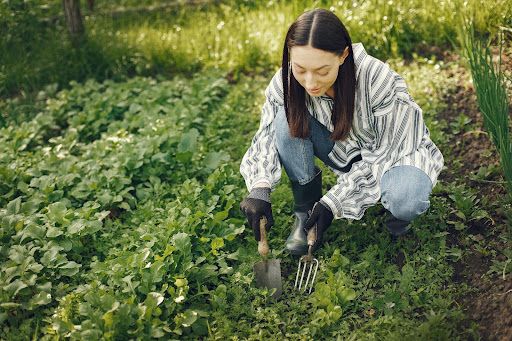Companion planting might just be the secret ingredient to creating a healthier, more productive garden. It has been practiced for centuries, utilizing the natural inclinations and strengths of different plants to support and protect one another. With a touch of plant-pairing wisdom, you can unlock the true potential of your garden without spending extra time or money on unnecessary chemicals or tools. In this article, we’ll delve into the magical world of companion planting and discover how to strategically pair plants for the best results.
Table of Contents
The Science Behind Companion Planting
Companion planting is not a whimsical concept– it’s rooted in scientific principles. Plant communities consist of diverse individuals with unique attributes that can benefit or hinder their neighbors. This relationship provides a balance that keeps pests, diseases, and nutrient imbalances in check. For example, one plant species might emit chemicals that deter pests, while its neighboring plant attracts beneficial insects that prey upon those same pests. This interconnected relationship promotes a healthy, thriving ecosystem within your garden.
Let’s explore some winning plant combinations that promote mutual benefits and help your garden flourish:
- Tomatoes and Basil: Tomatoes are susceptible to pests and diseases, but basil exudes strong-scented oils that deter common tomato predators such as aphids and hornworms. Additionally, some studies propose that basil can improve tomato flavor!
- Carrots and Onions: This duo offers a balanced partnership as carrot flies are repelled by the smell of onions and onion flies aren’t fond of carrot aroma. As a result, they are less likely to attack their respective targets.
- Corn, Beans, and Squash: Known as the Three Sisters, this Native American planting technique consists of supporting corn stalks for beans to climb, while squash vines shade the ground, retaining moisture and suppressing weeds.
Natural Solutions
One of the main benefits of companion planting is its ability to attract beneficial insects and repel harmful ones. By planting the right flowers and herbs near your vegetables, you prevent pests, like aphids or cabbage moths, from attacking your plants. Some well-known pest deterrents include marigolds, nasturtiums, and lavender.
If you’re looking for additional ways to protect your garden from pests while maintaining an eco-friendly approach, consider exploring options from reputable sources such as the Golf Course Lawn Store. By using organic insecticides and fungicides, you can keep pests under control without harming the environment or beneficial organisms.
As we strive to take care of our environment, adopting practices like companion planting can help reduce the ecological impact of our gardens. By cultivating plants that support and protect one another naturally, you may find that you can cut back on the use of synthetic fertilizers, pesticides, and herbicides. This in turn can lead to reduced soil and water pollution, decreased carbon footprint, and a healthier, more sustainable garden ecosystem.
A Healthier Garden
When plants are in good health, they tend to be more resistant to pests and diseases. Companion planting encourages stronger, more vigorous plant growth and leads to higher crop yields. Nutrient exchange is an important component of companion planting, with some combinations providing essential nutrients for each other such as nitrogen-fixing beans for nitrogen-demanding corn.
Companion planting not only benefits the plants themselves but also the soil they grow in. When two or more plant species are grown together, they often provide different benefits to the soil, such as improved structure, increased organic matter, or enhanced nutrient cycling. This can lead to a richer, more fertile growing environment for your plants, allowing them to thrive and produce bountiful harvests.
Beauty and Biodiversity
Beyond the practical benefits, companion planting is an aesthetically pleasing way to design your garden. Undulating rows of interspersed vegetables, herbs, and flowers create a visually stunning, highly functional gardening space. It’s not just about looks, though. Strategically planned companion planting can help manage the size and sprawl of certain plants, saving precious space in smaller gardens.
Another advantage of companion planting is the promotion of biodiversity in your garden. By using a variety of plants with different characteristics, you create a diverse habitat that supports a wide range of insects, birds, and other small animals. This in turn can help improve pollination of your plants, leading to better fruiting and higher yields. Beneficial pollinators like bees, butterflies, and birds are drawn to gardens with a mix of flowering plants, providing ample food sources and nesting locations.
Conclusion
The magic of companion planting lies in understanding plants’ natural relationships, pairing them to maximize their potential, and designing an attractive, highly productive garden. By embracing these ancient techniques, you can create a symbiotic community of plants that support each other while benefiting the environment, reducing your reliance on chemicals, and reaping the rewards of a bountiful harvest.
















